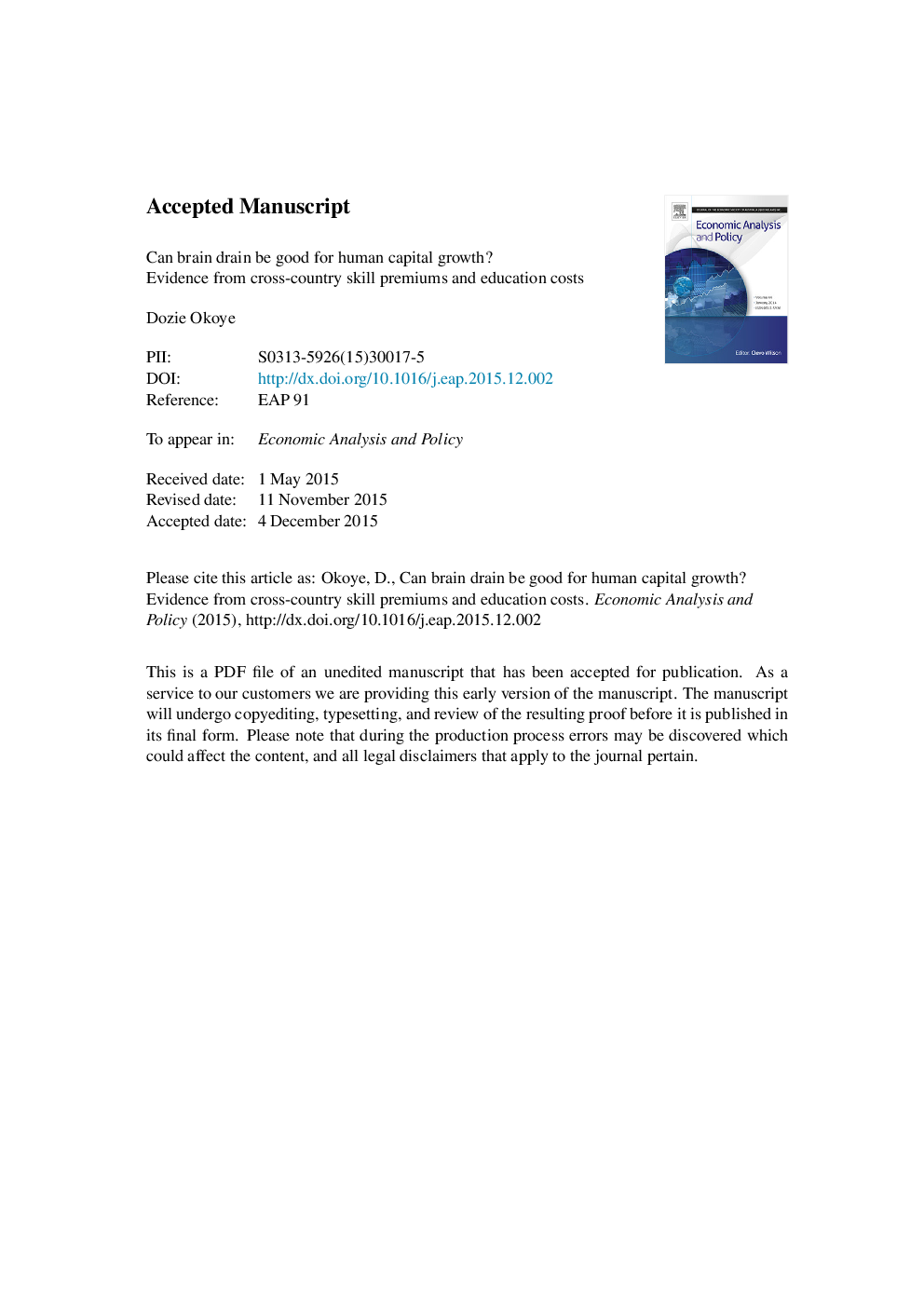| Article ID | Journal | Published Year | Pages | File Type |
|---|---|---|---|---|
| 5052732 | Economic Analysis and Policy | 2016 | 43 Pages |
Abstract
I study conditions under which a low-skill economy can grow its skilled labor force in the presence of brain drain. This occurs when skill premiums are low, and there are individuals in the economy who can afford an education. The model is calibrated to data on 23 low and middle-income countries. For 22 of the 23 countries, any increase in the rate of skilled emigration leads to a decline in the steady-state proportion of skilled workers. This is because increasing emigration rates does not affect current schooling costs which are binding at the margin. I provide some empirical evidence that the cost of education is relatively high in these countries, and that costs are likely binding because of the (un)availability of student loan programs. For brain drain to lead to a net increase in human capital, reducing education barriers and relaxing credit constraints are important policy responses.
Related Topics
Social Sciences and Humanities
Economics, Econometrics and Finance
Economics and Econometrics
Authors
Dozie Okoye,
